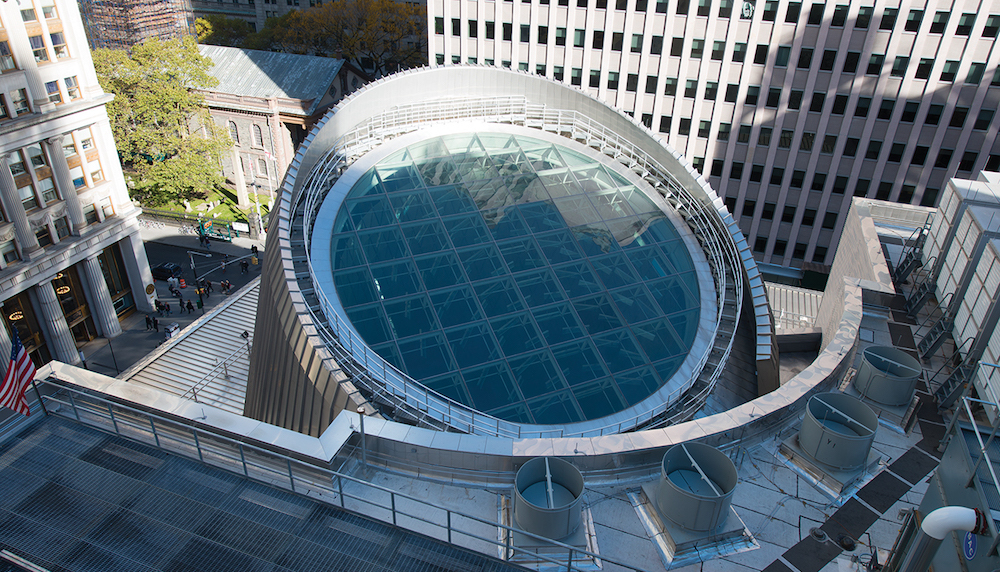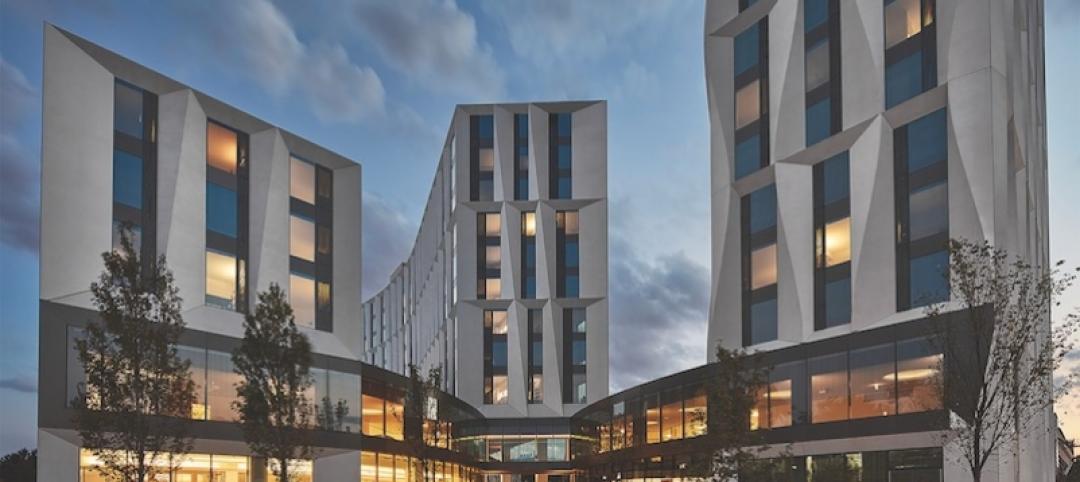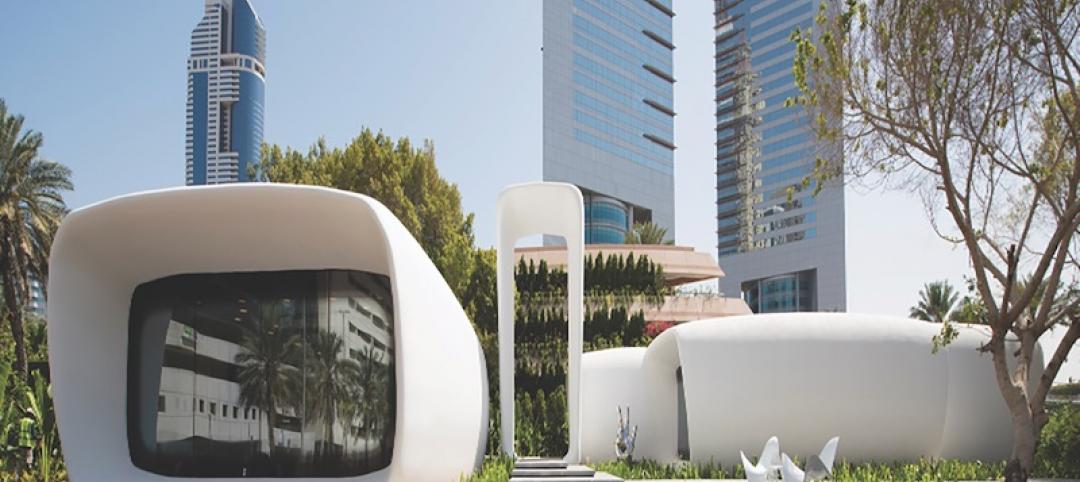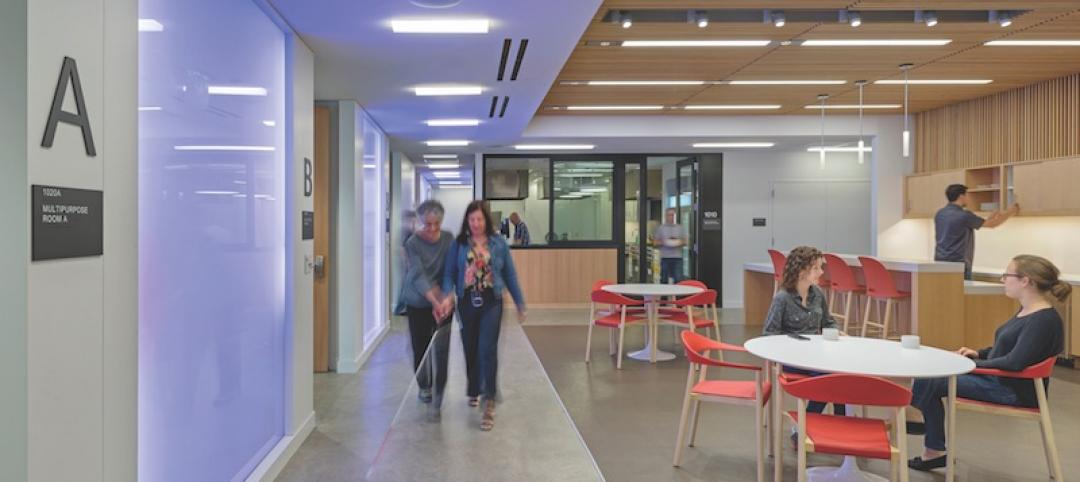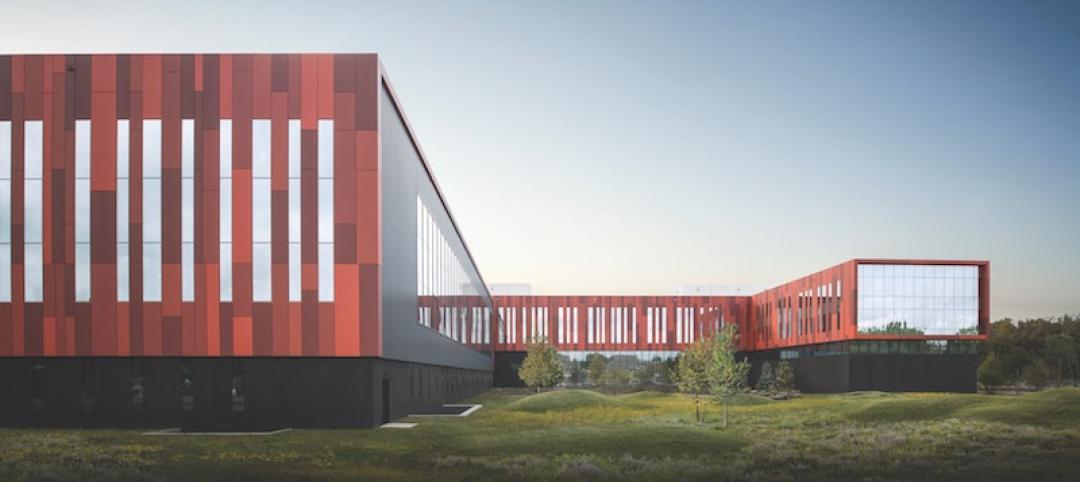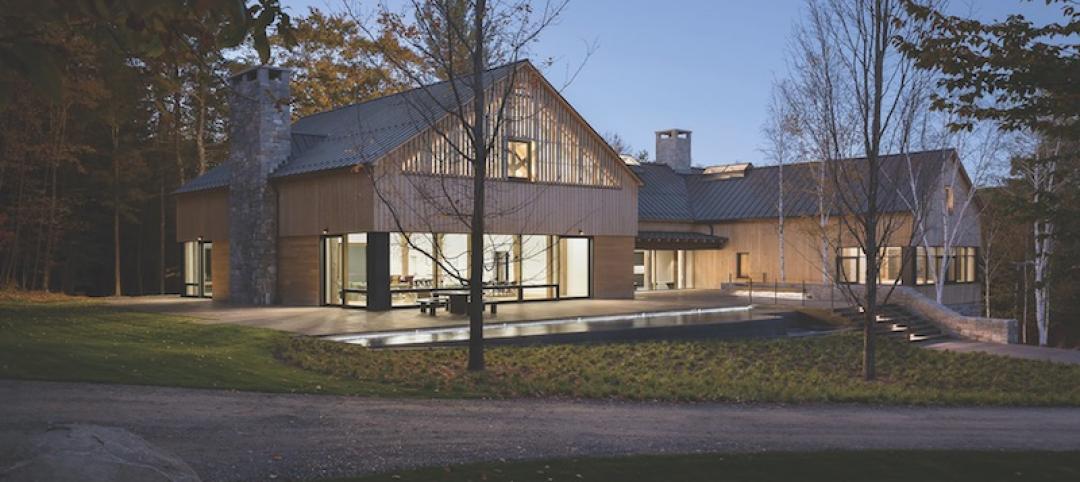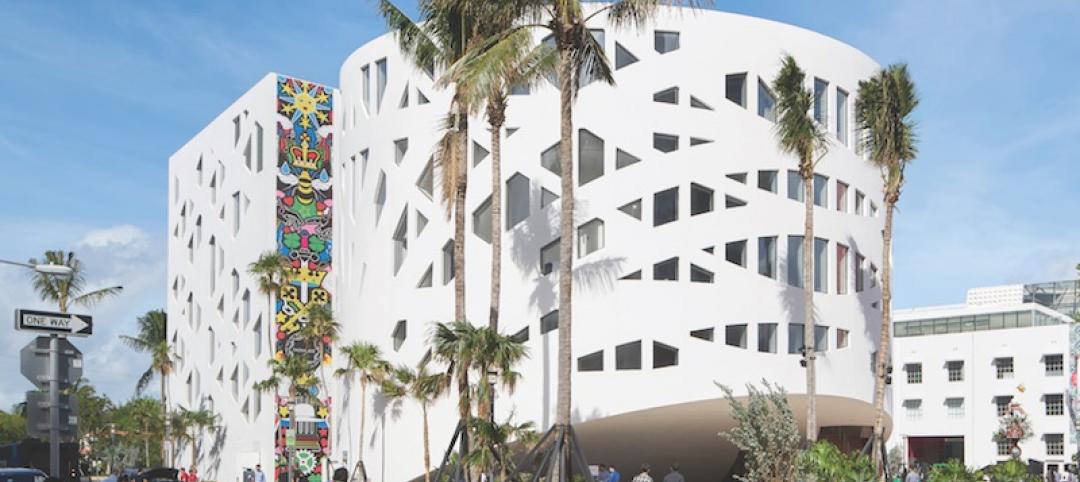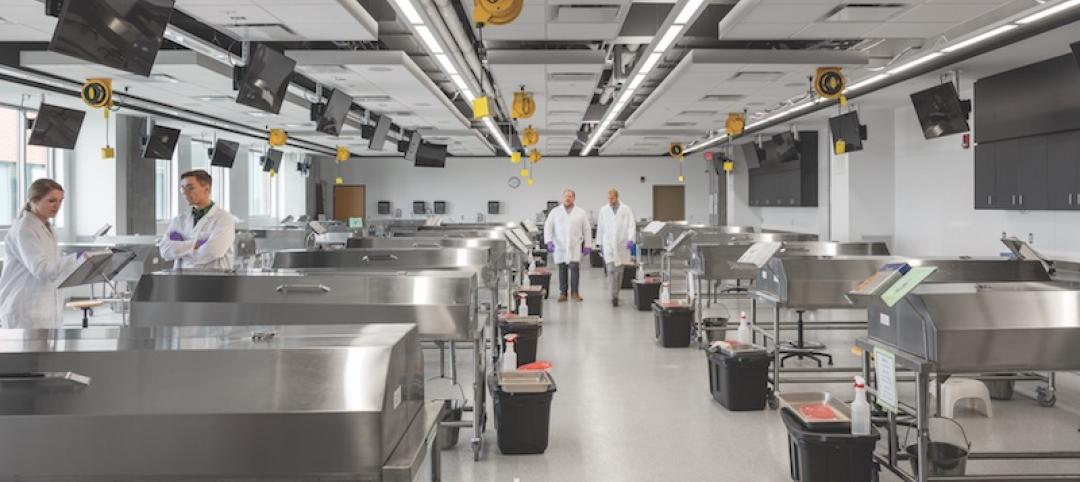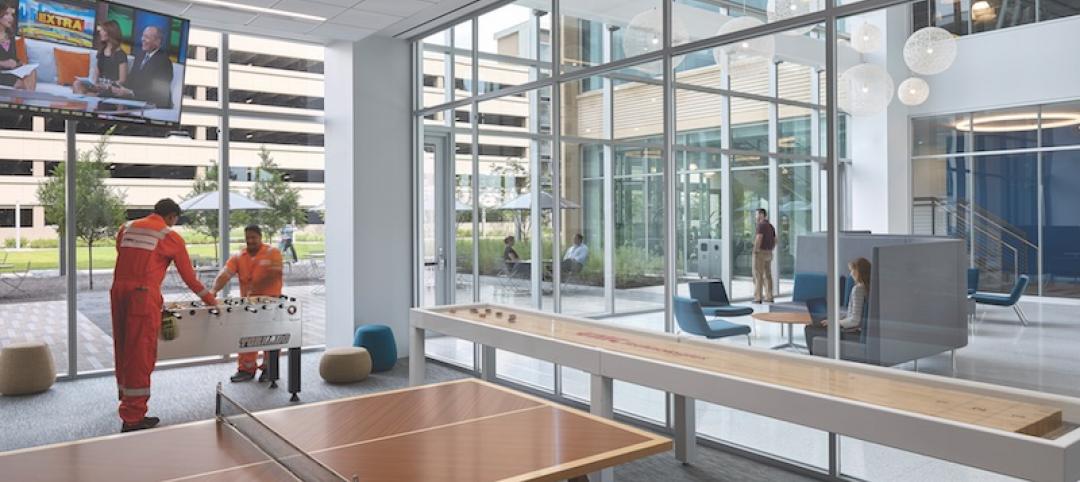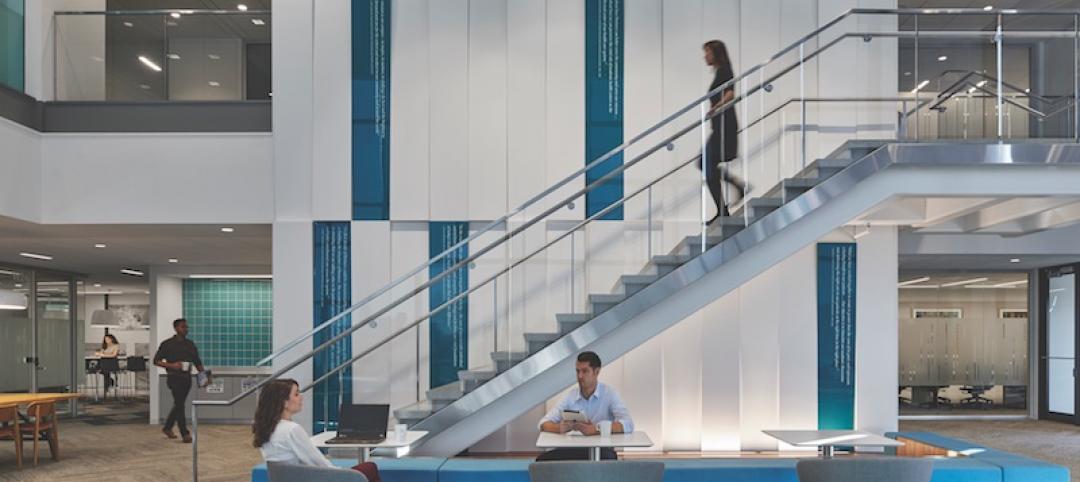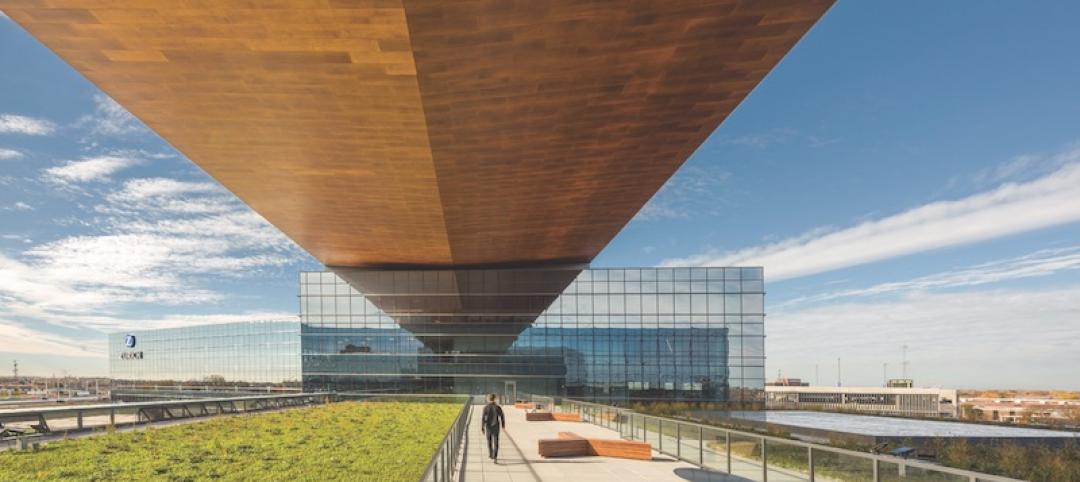The Metropolitan Transit Authority’s new Fulton Center transit station must seem like a miracle to the 300,000 subway riders who trod its polished granite floors every workday. Instead of the usual stultifying dankness of the city’s 421 other subway stops, Fulton Center offers even the most jaded New Yorker that rarest of gifts: sunlight, glorious sunlight! Thanks to a 120-foot-high oculus, the station overflows with natural light during the day; at night, weather permitting, you can look up and catch a glimpse of the galaxies. What a treat!
PLATINUM AWARD
Fulton Center
New York, N.Y.BUILDING TEAM
+ Submitting firm: Plaza Construction (CM)
+ Owner: Metropolitan Transit Authority
+ Architect: Grimshaw Architects
+ Structural/MEP: Arup
+ Electrical: Woodward Engineering
+ GC: Plaza Schiavone Joint VentureGENERAL INFORMATION
Project size: 120,000 sf
Construction cost: $1.4 billion
Construction period: 2004 (first award) to January 2015
Delivery method: Construction manager
This lovely bijou—the MTA calls it the “Jewel of Lower Manhattan”—did come at a price: $1.4 billion, not to mention more than a decade of planning, design, and construction. But that’s chicken feed compared to the $15 billion for the World Trade Center PATH station, which opened March 3 after nearly a dozen years of construction. Eat your heart out, Señor Calatrava!
The centerpiece of the station is the oculus. Not only does it flood the transit hub with daylight, the frustum-shaped dome also acts as a reservoir for the heat that rises from the subway lines; this reduces the load on the air-conditioning system. (The project earned LEED Silver status.) Steel cables descending from the skylight are adorned with 952 diamond-shaped aluminum panels. This giant art installation reflects daylight downward and through the building. Behind the netting are three levels of retail space, totaling 66,000 sf.
To detail and construct the oculus, the Building Team—led by Plaza Schiavone Joint Venture (CM), Grimshaw Architects, and Arup (SE/MEP)—created 3D models of the exterior stainless steel skin, developed a panelized pattern that mimicked the final geometry of the dome, and incorporated the panels, the structural supports, and the internal and external catwalks into the design. The panels were then prefabricated off site.
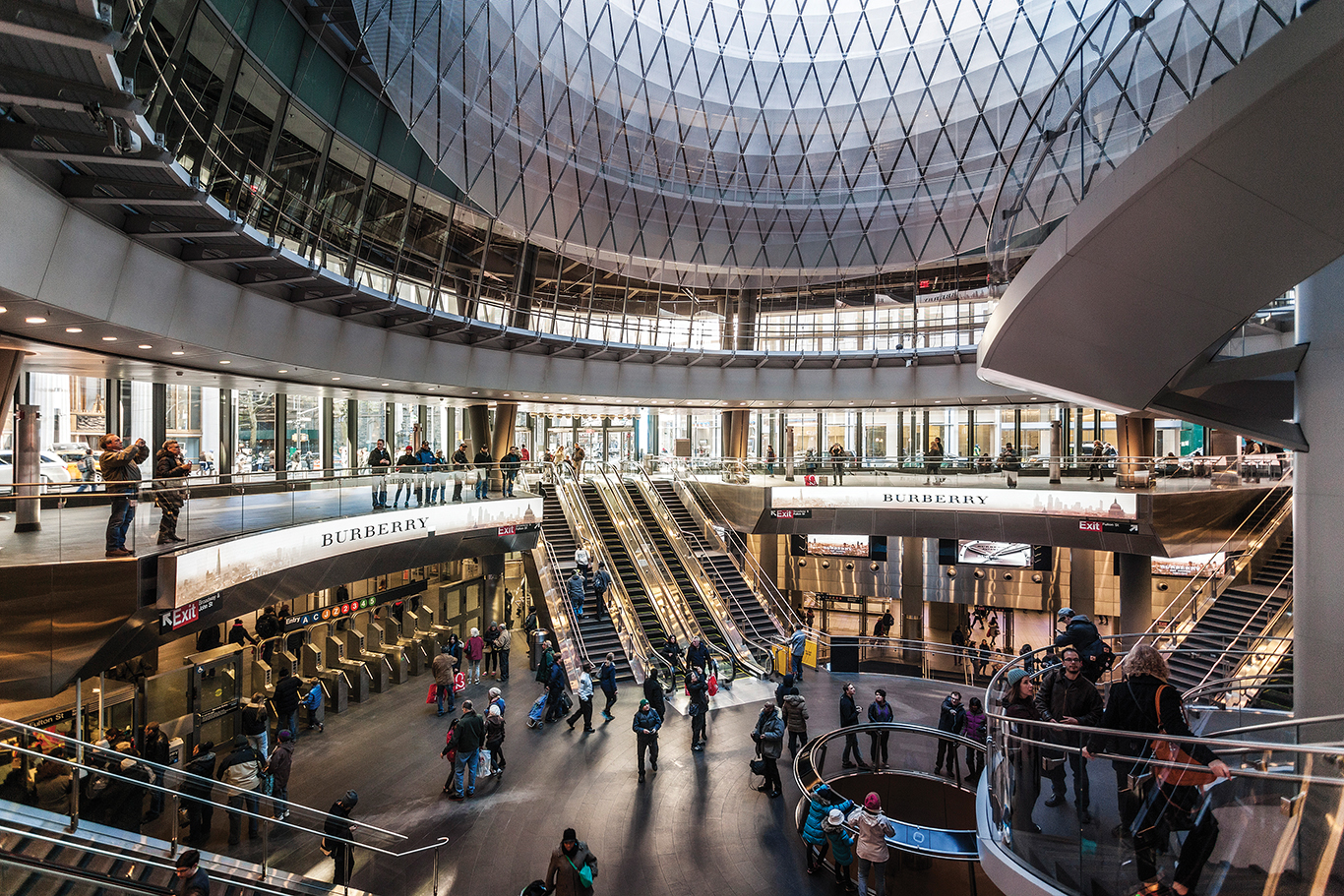 The interior of Fulton Center is constructed of architecturally exposed structural steel, glass storefronts, stainless steel panels, GFRC column covers and ceilings, granite flooring, and a decorative cable net structure in the oculus. Spiral stairs, 15 ADA-compliant elevators, and 10 escalators convey 300,000 passengers a day between nine train lines. A 350-foot tunnel connects to train lines at the World Trade Center. Photo: © Hallie Tsai/Grimshaw. Click to enlarge.
The interior of Fulton Center is constructed of architecturally exposed structural steel, glass storefronts, stainless steel panels, GFRC column covers and ceilings, granite flooring, and a decorative cable net structure in the oculus. Spiral stairs, 15 ADA-compliant elevators, and 10 escalators convey 300,000 passengers a day between nine train lines. A 350-foot tunnel connects to train lines at the World Trade Center. Photo: © Hallie Tsai/Grimshaw. Click to enlarge.
BUILDING TEAM FOCUSES ON QUALITY AND SAFETY
Maintaining the highest level of quality was central to the project. Subcontractors were given performance-based specifications that demanded a mockup for every critical aspect of the work. The construction manager’s Quality Control Team required each discipline to develop a “quality work plan” that included a rigorous inspection schedule. The team performed quality audits in Asia, Europe, and the U.S. Pacific Northwest to validate manufacturers’ quality programs and assure that materials met pre-established quality standards.
The 300,000 daily riders who use the nine subway lines that feed into Fulton Center represent 85% of all downtown subway users. Keeping them safe during construction was of paramount importance to the Building Team. Plaza Schiavone brought in a full-time safety site coordinator (and sometimes two) to oversee a comprehensive safety plan. The steel erector had to provide fall protection at six feet. All trades were required to obtain a ladder permit on a daily basis to avoid any hazards in the work area. After 966,353 worker-hours, the lost-time accident rate on the project was 2.25.
Fulton Center represents “a shift in the perception of the mass transit system and support facilities, while adding an attractive and inviting design to the urban streetscape,” said awards judge Gary B. Keclik, AIA, CSI, LEED AP, Green Globes Assessor, Keclik Associates Ltd. “It provides a welcoming way to make the subway experience more memorable for visitors and riders that’s vastly different from the traditional walk down steps into a dark tunnel.”
 A view up to the oculus from the main floor. Photo: © James Ewing/OTTO. Click to enlarge.
A view up to the oculus from the main floor. Photo: © James Ewing/OTTO. Click to enlarge.
 The Corbin Building, a 125-year-old brownstone landmark that abuts the site, was restored. Photo: © James Ewing/OTTO. Click to enlarge.
The Corbin Building, a 125-year-old brownstone landmark that abuts the site, was restored. Photo: © James Ewing/OTTO. Click to enlarge.
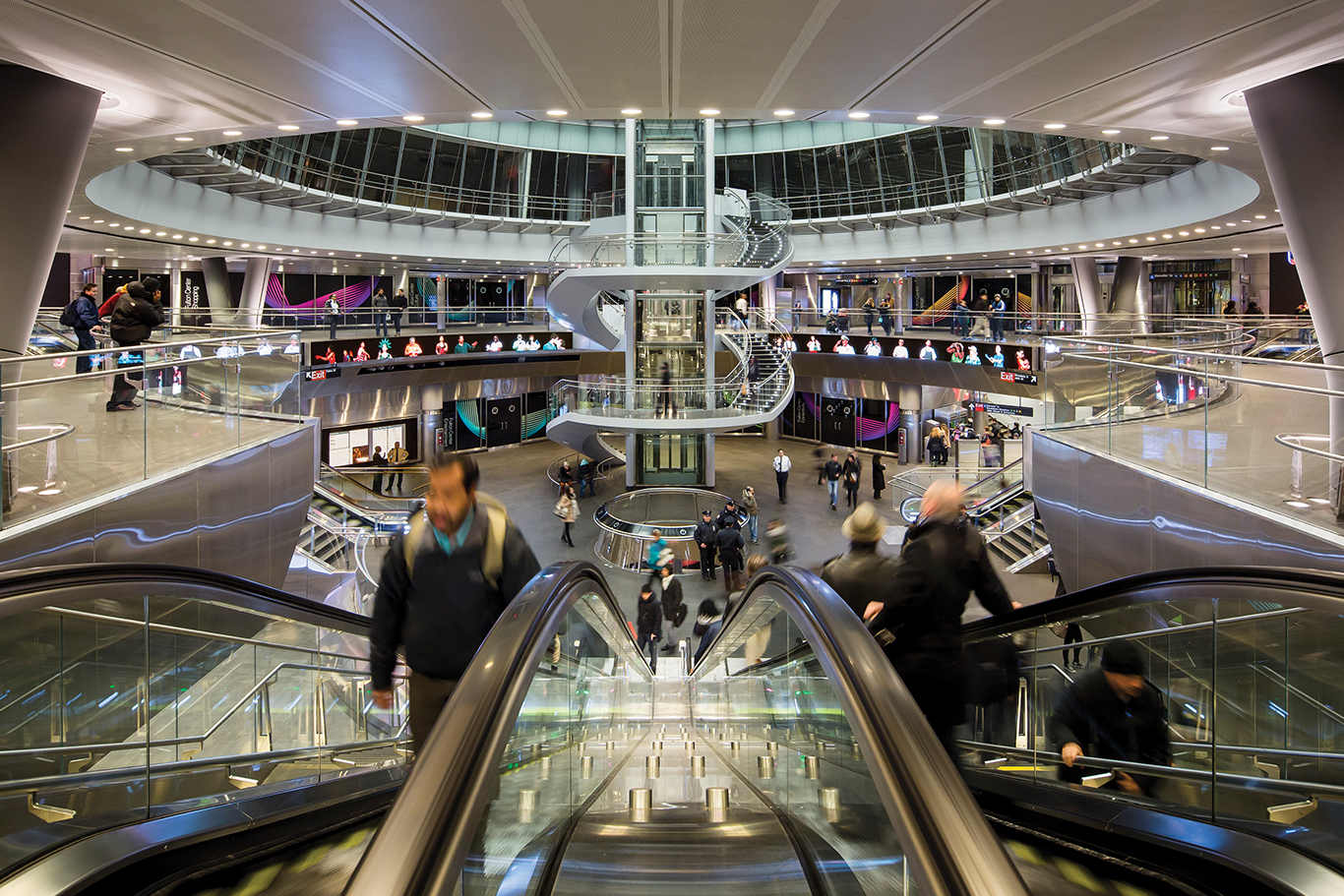 Fulton Center is the city’s only transit hub with all-digital signage—60 screens. Photo: © James Ewing/OTTO. Click to enlarge.
Fulton Center is the city’s only transit hub with all-digital signage—60 screens. Photo: © James Ewing/OTTO. Click to enlarge.
Related Stories
Building Team Awards | Jun 14, 2017
17 projects earn BD+C's 2017 Building Team Awards
Of the 17 projects, one received a Platinum Award, six received Gold Awards, six received Silver Awards, two received Bronze Awards, and two received Honorable Mentions.
Building Team Awards | Jun 14, 2017
3D-printed office: Office of the Future
Dubai kicks off 3D-printing tech initiative with a novel office project.
Building Team Awards | Jun 14, 2017
A space for all: Lighthouse for the Blind and Visually Impaired
Nonprofit HQ fitout improves functionality, accessibility for blind and low-vision individuals.
Building Team Awards | Jun 13, 2017
Government campus reimagined: Intelligence Community Campus
Building Team converts 1940s campus into a sleek, modern home for U.S. intelligence agencies.
Building Team Awards | Jun 13, 2017
Secluded sanctuary: Alnoba leadership training center
Leadership training center becomes New England’s first Passive House building.
Building Team Awards | Jun 12, 2017
Circles and squares: Faena Arts Center
Silver Award: The Faena Arts Center’s forum is divided into two volumes, one a cylinder, the other a cube.
Building Team Awards | Jun 12, 2017
The right prescription: University of North Dakota School of Medicine & Health Sciences
Silver Award: North Dakota builds a new medical/health sciences school to train and retain more physicians.
Building Team Awards | Jun 12, 2017
Texas technopark: TechnipFMC John T. Gremp Campus
Silver Award: TechnipFMC’s new campus marks the start of a massive planned community in north Houston.
Building Team Awards | Jun 8, 2017
Quick turnaround: Partners HealthCare
Silver Award: A 2½-year project brings Partners HealthCare’s sprawling administrative functions under one roof.
Building Team Awards | Jun 8, 2017
Raising the bar: Zurich North American Headquarters
Silver Award: Forgoing a typical center-core design, the Zurich North America Headquarters rises 11 stories across three stacked bars.


